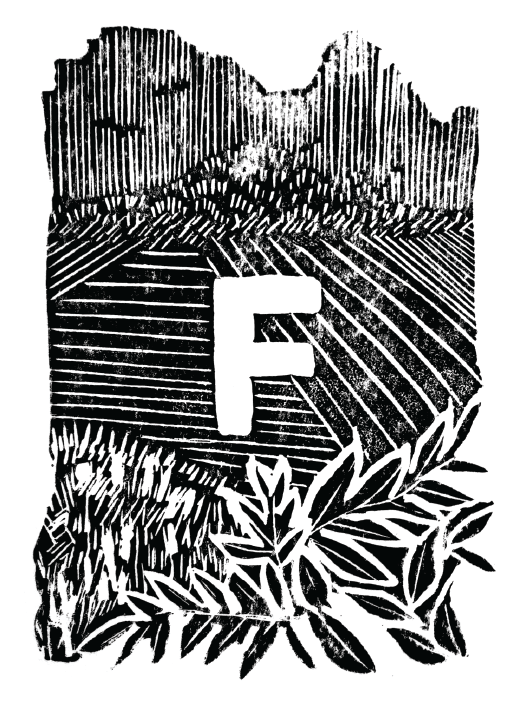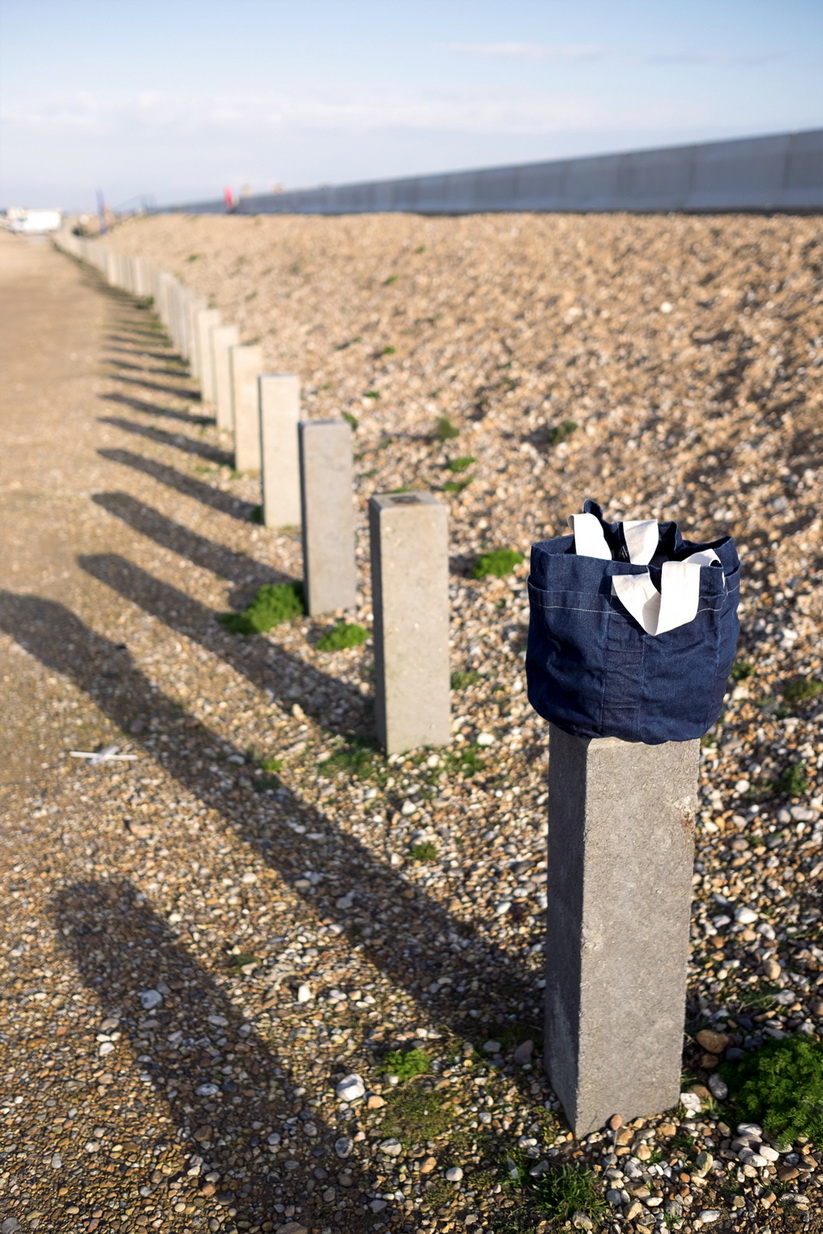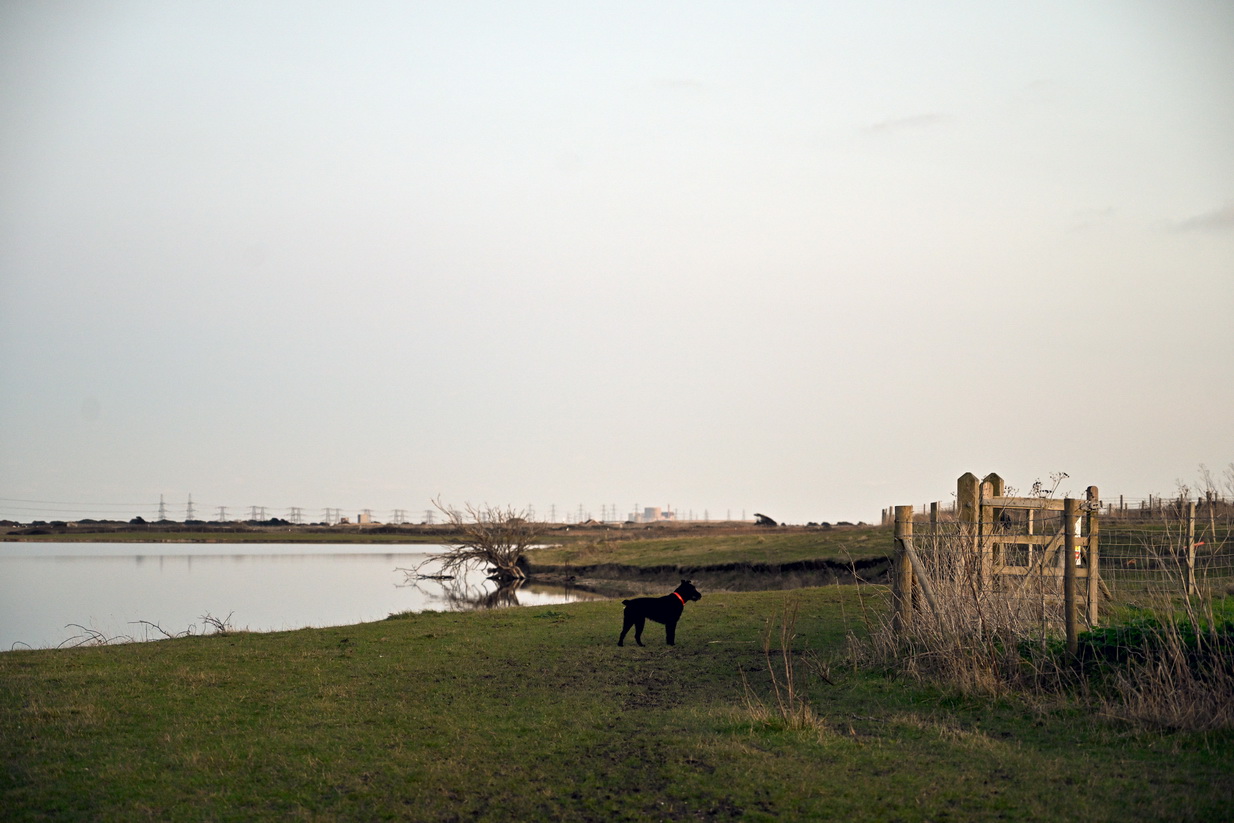Worthy Pursuits
Merchant and Mills’ evolution has been charmingly unhurried and uncontrived; its process refreshingly as au naturel as its founders and their windswept environs. At the Rye headquarters — where curated bolts of fine fabrics, Savile Row haberdashery, and beautifully pared-down patterns beckon us into a nostalgic world of sewing, revisited — a dressmaker and a photographer trace their company’s origins through the 1980s, into overcrowded rooms of a Herefordshire house, and across England’s Southeast marshes toward a future beyond fast fashion.
Words and visual diary below by Carolyn and Roderick.
Carolyn: Sewing came from my Mum. She was always sewing. I cannot remember how old I was when I first used her sewing machine, but I was young. She taught me to sew. I made everything from school uniforms to peg trousers, I learnt to draft my own patterns and, come the early '80s, at the time of ‘new wave,’ I had some pretty bonkers outfits. Compared to today, there was not the choice on the high street and clothes were relatively expensive. As a young alternative type, sewing was a way of making my own fashion or anti-fashion statement. Cloth was easy to find and generally not very expensive, so I made a new outfit for every Saturday night.
Carolyn: I grew up in South Anston, a small village about 12 miles outside Sheffield, South Yorkshire. I have 3 sisters, and we would invite ourselves to help the farmers feed the pigs and chickens, we played in their old barns, and made houses from straw bales that filled the fields during the summer holidays. It has very much changed now. All the farms have been sold off and houses are crammed into once-green fields.
Although my family moved away when they retired (they were not from Yorkshire), I still think of it as home. Other homes have been in Italy, London, New York, and Herefordshire.
Roderick: I grew up in Addiscombe, just outside of Croydon, but found it stiflingly small and emigrated to Camden Town at 17. In my twenties, I had a spell in Brighton before coming back to London. In the early naughties, I found myself travelling the world shooting food and travel features and loved being on the road, living out of a bag. I also had reason to stay in Skye for a few days every month, which made me realise I was not a committed city boy — without that experience I think I would have found country life impossible!
Carolyn: We live in a lonely brick house out on the Romney Marsh which, although windy, is beautiful and serene. We watch the weather and low flying swans from the comfort of the sofa. I stop by the beach everyday with Flower, our dog. I walk around the lake early in the morning and watch the mist rise with the bright morning sunshine. Every day I see beauty all around me.
Roderick: Our remote little house on the marshes is the most ‘at home’ I have found myself since childhood. I think of Rosedale (our house) as basecamp from which to go out and explore. We have a unique lichen on the walls and roof as the air is so clean. Swans take off and land on the lake outside, a pair of magpies have made our garden their home. Sometimes it’s so quiet I can hear the kiss of my contact lens as it goes in. The roads are narrow and winding, and not a shortcut to anywhere: ideal for spirited motorbiking. The only challenge is to get supplies before 10pm or risk a 40-mile round-trip to Ashford.
‘I wanted to give this craft the gravitas it deserves.’
Carolyn: When I began Merchant & Mills in 2009, I said to myself, would I wear it? would I use it? would I buy it? I did no market research as to whether anyone actually sewed anymore. I was actively discouraged in my endeavours by almost everyone. This discouragement worked for me, because it kept me really focused on making things how I wanted them to be.
It started with thoughts of a uniform — a dress you could wear every day that would work in a big range of fabrics. (A fashion designer may be used to working with a set fabric, but in the sewing world your pattern might be made in many different fabrics. It’s out of your control.) Then I thought about construction: the simpler the better (especially at the beginning when I was unsure about people’s sewing skills). I started without zips, keeping detailing to the minimum. Quite a strict brief.
I also looked at all the tools and haberdashery. When men buy tools, they buy the best they can afford, but what I found on the market for dressmakers was cheap and pink. I don’t really buy pink plastic things, so again, along with Roderick, I designed our products to be what I would be attracted to myself. I looked for the level of design that might go into the best products. I wanted to give this craft the gravitas it deserves.
I was living next door to my sister in Herefordshire at the time. It was a big, old, icy house that soon filled up with Merchant & Mills stock and workrooms, until we could no longer move in the kitchen and could barely find the TV of an evening. We decided it might be time to move. We were only in Herefordshire by circumstantial accident, but would make the long journey to Brighton to see Roderick’s daughters every other weekend so it seemed a good idea to start our search in the South. Neither of us wanted to go back to London; we had gotten used to rural life.
We didn’t pick Rye but found a small warehouse in its town centre which fit the bill. We could have been anywhere in the Southeast, on a farm or rural industrial estate somewhere, but Rye turned out to be the perfect choice, with surprisingly good links to London. We have a good pool of local creative people and have assembled a very talented workforce.
In the early days, I used to do everything myself but now I don’t have time. I will spend a day with our pattern cutter, Karen, we will go through ideas, sketching and draping on the stand. We might even go for a long walk. Then she will produce a set of toiles which we will alter as we go. Karen has a lot of input into the styles; I have known Karen since our fashion degrees and have always loved her hand on things. From these ideas, final samples will be made and, if everything works, the instructions are created. Between us, we make up samples to test the instructions and will go back and forth until we are happy. Finally, they will go to print. This can take a few months.
‘I people-watch and will see something that suddenly I like. It might be a fisherman on the docks, it might be a student wearing an ’80s style oversized coat, but it will stick in my mind as the seed of an idea.’
Putting my desk space aside (which is piled up with fabric samples, artwork, and lots of nonsense), we are constantly striving to stay organised.
We have three sites. Firstly, there is the shop where all the internet orders are packed and where we have the sewing school — here, we have a long cutting table so two people can cut at the same time, and there is a natural oak glazed screen with large sliding doors, behind which all the packing happens. Secondly, we have the Winchelsea Road depot where all the wholesale packing happens. Roderick and I have our desks here and Chrissie runs the sampling department. Roderick’s photo studio is here as well, which is central to the website and feeding Instagram. We are currently re-jigging this space to store more fabric which is currently held at the third site: a small warehouse up at Rye Harbour.
I allow the staff to organise their own space and storage. They are on the frontline so know much better than me how to get the best flow. I think it’s important to continue to revisit how the space works.
Cloth has now become such a big part of what we do, and I love cloth. Cloth is full of potential. So we travel the world looking for the best cloth we can find, and I will usually take a second pair of eyes — either Michael (general manager) or Michelle (head of retail). It’s great to have a team with a fresh eye, sometimes a younger eye with a different perspective. For more exotic trips, Roderick and I will go together, taking photographs of the experience to blog about or add to our occasional newspaper.
Although we have a strict ethos for our patterns and notions, fabric is different. Although all our cloth is invariably natural fibre, we don’t have any other restrictions on what we might buy. There is so much beautiful cloth, it is up to us only to curate. We have recently started to work with other designers to produce our own cloth; we have been in the position to dye or weave our own colours for many years, and the move to surface design is very exciting.
There is always a concern that the talent pool will be limited in a rural location, but we have a great team. When we first arrived, Chrissie walked through the door and asked for a job. She is an amazing and very experienced seamstress — a rare find these days. The next day I had Michael, with years of brand-building, research, development, and sales experience in London. The team has been built around these two gems and I am always amazed at the level of talent working here for us in Rye.
I have always intended to make patterns that were so good that customers would want to buy the finished products! But instead, they have to make them. I hope then they are inspired to take up the needle.
I people-watch and will see something that suddenly I like. It might be a fisherman on the docks, it might be a student wearing an ’80s style oversized coat, but it will stick in my mind as the seed of an idea. Not all ideas make it through but sometimes I’ll leave a toile hanging on the rail and a year later will suddenly know what to do with it.
‘I always think that, like many movements, we all have the thought at the same time; we tune in to the zeitgeist.’
Sewing is my passion. It is my heartfelt faith that it is one place you can lose yourself for a day or two. It’s an alternative to meditation and, better still, to traipsing the High Street in search of the perfect outfit. It’s an alternative to the sameness of fashion, the quest for something better, more bespoke and personal. I hope that this is what our customers can feel in our products.
I always think that, like many movements, we all have the thought at the same time; we tune in to the zeitgeist. For Merchant & Mills, it’s all about bringing the right products to the likeminded customer.
I have always disliked fast fashion. I am amazed that things can be so cheap. How can they be so cheap? Someone is paying the price that we are not, somewhere. I think the world is coming to realise this cost, the size of the environmental impact of clothing, and so a movement is afoot to redress this. The revolution is consumer-led. We think perhaps we cannot change the world, but if all we take care of our small part, the world will change. We are seeing more organic, recycled, and sustainably-produced fabrics all the time. They are still just a tiny part of the global textile machine, but there is steep, year-on-year growth. We support them by buying and using their fabrics. I hope that these makers will continue to thrive and grow.
Things have changed. Our customers are much more skilled and we have grown with them, so we can now make more complex patterns, even jeans, but again we are looking at longevity of the design, practicality of wear, and suitability of a range of fabrics.
We have been surprised, especially with our new shop, by how many people make the journey to visit us from all over the UK and, indeed, all over the world. This was the reason I invested so much into the retail space — a reward for all those willing to make the journey to Rye: a Thank You to all of them!
My favourite project to date was probably the Alexander McQueen exhibition for the V&A. We were still quite small when they asked us to work on products for the show. When the V&A told us that when they had asked the McQueen team whether they would be happy for us to do it, they said, oh yes, we love Merchant & Mills, I think I cried.
I think it has all been a wonderful surprise.
I think when you first leave the city, you return regularly to get your fill of the buzz but as time passes you go less and less, and finally when do go back you think there are just way too many people. You can only leave the city when you are ready. There are lots of opportunities in rural areas, they might just take a bit more time to find them.
Favourite tool of the trade: Bamboo point turner, such a simple little tool, but no more holes in turned-out collars.
Recently inspired by: A trip back to Yorkshire Dales, it felt like home. A bleak sheep scattered landscape randomly divided by dry stone walls. It’s a very textural landscape. Quiet, an underground, under sound silence, almost like the still of the desert. It’s the very best walking country which has become one of my favourite things to do.
Favourite local spots: Great Dixter House and Gardens — amazing oak barns, beautiful naturally planted gardens, and grass covered gazebos. The Fish Hut at Dungeness — fresh locally-caught fish, sitting in a deck chair in the unique shingle landscape of Dungeness.
Roderick, on his photographs: “We use the surrounding countryside in many ways. We had a phase of naming new pattern garments after local places: we have the TN31 Parka, the Landgate, and the 101 Trousers which were named after seeing the number daubed on a lamb! As a photographer, I use the area from Dungeness to Rye as a visual backdrop to more creative images needed by the company. In our second book, we took model shots with garments counterpointed with local mood, like boats, roads, and railway tracks or odd buildings. On the home front, we rescued the house from the grasp of the marshes (it was thoroughly derelict) and so I have inadvertently continued to document the notion of home.”
Published on: 12 June 2019. Edited by Fields in Fields. All images courtesy of Carolyn Denham and Roderick Field of Merchant & Mills. ▪ Sewing patterns, textiles, haberdashery, kits, and classes available at: Merchant & Mills, 14a Tower Street, Rye, East Sussex TN31 7AT. Visit merchantandmills.com.
















